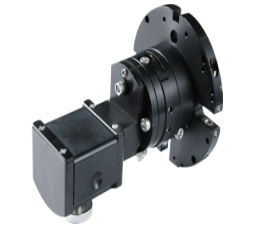
- Home
- >
News
A multifunctional sample stage is an experimental or testing platform that integrates multiple functional modules, used to carry, manipulate, and test different types of samples (such as materials, biological samples, electronic components, etc.). It usually has flexible configuration and scalability to meet different experimental needs, and is widely used in scientific research, industrial testing, medical and other fields. 1. Core functions and features of multifunctional sample stage (1) Multi dimensional adjustment of multifunctional sample stage Motion control: Supports precise movements such as X/Y/Z axis translation, rotation, and tilt, and is compatible with automatic scanning or manual fine-tuning. Environmental simulation: It can integrate modules such as temperature control (-196 ° C to several thousand degrees), humidity control, vacuum/atmosphere environment (such as inert gas, corrosive gas), etc. Force/electric/magnetic loading: Some models support the application of mechanical force, current, magnetic field, etc., used to study the performance of samples under extreme conditions. (2) Compatibility and Scalability of Multi functional Sample Stand Adapt to multiple analytical instruments Modular design allows users to add functions according to their needs, such as heating stations, cooling stations, fluid infusion systems, etc. (3) High precision and stability of multifunctional sample stage Nano level displacement accuracy, anti vibration design, suitable for in-situ observation or long-term experiments. Some models support in-situ characterization (such as real-time observation of sample changes during stretching, compression, and heating processes). (4) Automation and Intelligence of Multi functional Sample Stand Automated testing is achieved by controlling motion trajectories and environmental parameters through software. Integrated sensors and data acquisition system, real-time recording of sample reactions (such as deformation, resistance changes, etc.). 2. Typical application scenarios of multifunctional sample table: (1) Materials Science of Multi functional Sample Stand Study the performance of materials in high/low temperature, stress, and corrosive environments. In situ SEM/TEM observation of material deformation, phase transformation, or crystallization processes. (2) Biomedical multifunctional sample stage Cell culture and drug permeation experiments require temperature control, humidity control, and gas environment. Cooperate with microscopic imaging to observe the dynamic changes of living samples. (3) Electronics and Semiconductors for Multi functional Sample Stand Chip testing: Provides functions such as probe positioning, thermal shock, and electrical performance testing. Sample positioning and processing in photolithography or coating processes. (4) Chemical/Energy Research on Multi functional Sample Stand In situ monitoring of catalytic reactions (such as surface reactions under illumination and heating conditions). Battery electrode testing (simulating expansion/contraction during charging and discharging processes).
The multifunctional sample stage is a highly integrated experimental equipment mainly used in the fields of materials science, semiconductor manufacturing, electron microscopy analysis, etc. Its core features are modular design, multifunctional integration, and high-precision control. 一、 The core functions and structural characteristics of the multifunctional sample stage 1. Modular design of multifunctional sample stage: Multiple functions are achieved through different module combinations, such as self rotation coupling module (speed 0~20 revolutions per minute, with zero limit), lifting module (standard stroke 50mm/100mm, customizable), heater module (maximum temperature up to 1100 ℃), etc. Support DC/RF power supply connection to meet the needs of thin film growth, sample cleaning, or auxiliary film formation. 2. High precision control and sensors for multifunctional sample stage: Equipped with temperature, pressure and other sensors, real-time monitoring of sample environmental parameters, and adjusting heating, cooling and other operations through the control system. Some models integrate pneumatic baffle modules for easy operation. 3. Compatibility and adaptability of multifunctional sample stage: Suitable for testing irregular samples such as trace powders, sheet materials, and large-sized samples, avoiding the damage caused by traditional cutting or grinding. Supports sample sizes below 6 inches and customizable flange interfaces. 二、 Application Fields of Multi functional Sample Stand 1. Thin film technology for multifunctional sample stage: used for advanced thin film growth technologies such as MBE (molecular beam epitaxy), PLD (pulsed laser deposition), magnetron sputtering, as well as substrate annealing, high-temperature degassing and other processes. 2. Electron microscopy analysis of multifunctional sample stage: Cold field scanning electron microscope: Fix the sample with long screws and adjust the conductivity with compatible brass washers. TEM/FIB system: integrates in-situ delamination, nanoprobe testing, and TEM analysis to avoid contamination or damage caused by sample transfer. 3. Failure analysis of multifunctional sample stage: Integrating atomic site stripping, electrical testing and analysis processes in FIB and TEM systems to improve success rate and efficiency. 三、 Technical advantages of multifunctional sample stage 1. Integration and automation of multifunctional sample stage: reduces manual operation complexity through modular design, supports overall movement and precise positioning in vacuum environment. 2. High reliability of the multifunctional sample stage: using standard flange interfaces (such as CF50/CF40) to ensure sealing and compatibility. 3. Customization of multifunctional sample table: Heating material, stroke length, and sample holder type (such as 3-jaw bayonet type, bottom fork type) can be selected according to needs. Overall, the multifunctional sample stage is a key equipment for material research and micro analysis, commonly used in X-ray diffraction instruments. Its value lies in functional integration, operational flexibility, and adaptability to complex experimental requirements. The specific selection needs to match the corresponding modules and performance parameters according to the actual application scenarios (such as thin film technology, electron microscopy analysis, or failure analysis).


